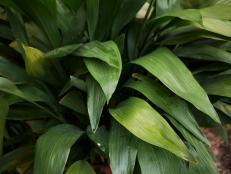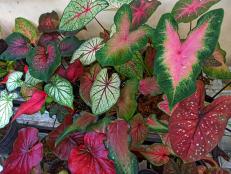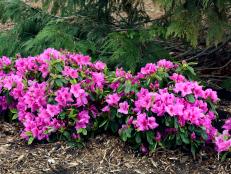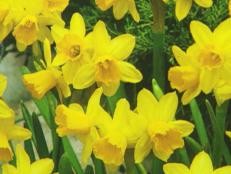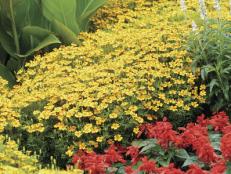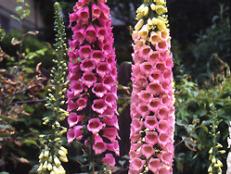Woodland Garden Design
Transform a shady, wooded area into a lush garden with these creative ideas.

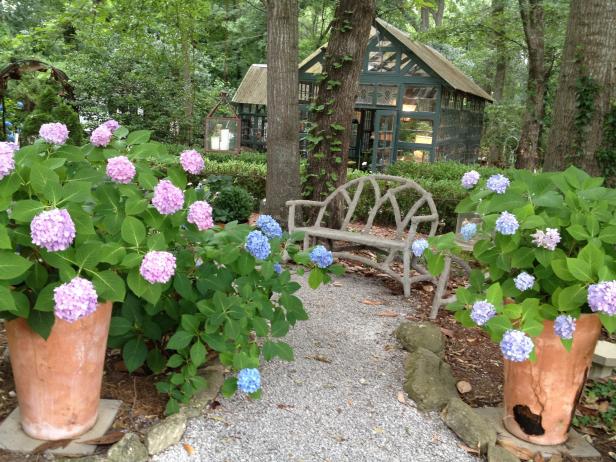
Photo by Lynn Coulter
If you have a wooded area in your yard, you’re in luck: you already have the foundation for a beautiful new garden spot. Choose plants that will thrive in the dappled shade of your trees, and add a path to walk or a rustic bench for sitting, and you’ll have a shady woodland retreat from the heat of summer.
Here’s how to get started:
First, consider where you want a path or bench, and use a trimmer, edger or lawn mower to clear out any grass and low-growing vegetation. (Be careful when using these tools; you may hit roots, stumps, rocks and other debris, so wear appropriate safety glasses and other protective gear.)
Decide whether you’ll keep your path or bench area natural—which will require periodic clearing and clean up—or whether to bring in pebbles, bark chips or some other kind of mulch to keep weeds and grass from growing back. A boardwalk is a good choice if the ground stays marshy or wet. Stepping stones are another option, if you can find some that look natural, not out of place.
Shop for native plants that grow in shade. Don’t dig them from other places and try to transplant them; wildflowers are usually too fragile to survive, and some are endangered and protected by law. Besides, you don’t want to destroy the habitat that birds, insects and small animals may depend on for their survival. Look for nursery-grown natives instead.
(You can collect native plants from some national forests and grasslands, as long as you have a permit from a USDA Forest Service District office and follow their guidelines. You can find more information about that here.)
If you want, add some cultivated plants that tolerate shade to your woodland garden. They’ll make it more colorful and showy. Choose plants or bulbs that flower at different times of the year, and you’ll always have something in bloom.
One of the most beautiful features of a woodland garden is that the vegetation grows in layers. If your existing trees have low-hanging branches, you may want to prune some of them to raise the canopy and let in more light. Then add a layer by planting smaller, understory trees, like dogwoods, crabapples and redbuds. Add yet another layer with large shrubs. Avoid planting in lines or formal designs, and go for a mix of interesting textures, forms and colors.
When you plant shrubs and trees, remove any surrounding weeds or grass so you leave a cleared circle with about a 2-foot diameter around them. Then add a natural mulch to keep the unwanted vegetation, which will compete for water and nutrients, from coming back.
If the soil in your woodland area is already dark and rich in decomposed leaves and other organic materials, you’ll probably be fine. If it’s mostly sand or clay, add plenty of good compost and organic matter. Just be careful not to dig or cut into the roots of other trees and plants. If you can’t work in the amendments, leave them on top of the soil.
Once you’ve established your woodland garden, you’ll find that it doesn’t require a lot of maintenance, especially if you mulch your cleared areas. Your biggest challenges may be keeping fallen leaves from smothering your plants. Just rake them off when needed and leave them to decompose nearby.
Water may be another problem, since trees consume a lot, so think ahead and go with natives or drought tolerant plants if this might be an issue. And again, mulch to help keep moisture in the soil.
A plant sampler for a shady woodland garden (read plant tags before you buy, to be sure you can provide the growing conditions they need)
Shrubs
Viburnum
Mountain laurel
Rhododendron
Ninebark
Shade-tolerant holly
Sweet pepperbush (summer sweet)
Beautyberry
Winterberry holly
Bottlebrush buckeye
Deciduous azalea
Oakleaf hydrangea
Mahonia
Witch hazel
20 Woodland Garden Plants
See All PhotosFoliage and Flowers
Hostas
Ferns
Heuchera
Astilbe
Anemone
Columbine
Bleeding Heart
Lungwort
Toad Lily
Violet
Woodland phlox
Lenten rose
Bulbs
Daffodils (Narcissus)
Grape hyacinth
Anemone
Snowdrops
Crocus
Siberian squill
Spanish bluebell
Winter aconite









